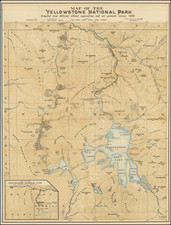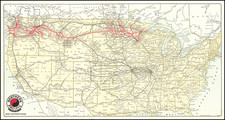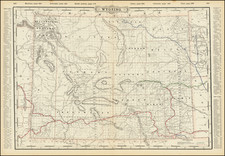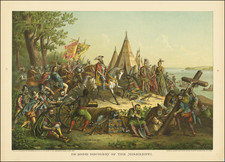On August 28th, 1833, Karl Bodmer captured a defining moment of escalating tensions in the American frontier at Fort Mackenzie, where he and Prince Maximilian of Wied witnessed an unforeseen onslaught by Assiniboins and Crees on a Blackfeet camp. Rendered in his signature combination of meticulous observation and artistic expression, Bodmer's depiction gives us a valuable insight into the volatile relationships among tribes and the unpredictable nature of life in the frontier territories.
Bodmer and Maximilian had arrived at Fort Mackenzie just weeks before the attack. As Maximilian reported, the fort's occupants awoke to the crack of musket fire as Assiniboins and Crees descended upon the unsuspecting Blackfeet, slicing through their tents and discharging firearms and arrows. The narrative, albeit horrifying, highlights the spontaneous eruptions of violence and the precarious survival dynamics characteristic of the period.
Bodmer, despite being a direct witness to the violent event, likely did not make immediate sketches of the scene. His later studio work, built upon a backdrop from an existing watercolor and pencil sketch of Fort Mackenzie, presents a careful reimagining of the horrific episode. The artist's nuanced composition manages to turn an otherwise chaotic scene into an almost frieze-like depiction, echoing classical and Renaissance scenes, with studied and contrived movements.
One notable feature of the tableau is Bodmer's attention to individual figures amidst the general turmoil. A small pencil sketch of a woman fleeing the attack is associated with the tableau, likely serving as preparatory work for the final composition. This focus on the human element, amid the violent backdrop, underscores Bodmer's commitment to capturing the emotional resonance of the event.
While Prince Maximilian initially did not perceive the scene as a worthy subject, Bodmer discerned its potential appeal. His tableau's historical accuracy, coupled with the variety and complexity of the depicted scene, successfully combined to create an arresting portrayal of a critical incident on the frontier, an image sure to captivate its audience. Through this dramatic tableau, Bodmer has brought to life a crucial moment in the history of the American West, providing a visual narrative that complements and enriches our understanding of this turbulent era.
State
Ruud's 2nd of 4 states, before the printer's credit is changed from "Alex,, Manceau & Hirlimann sc." to "Imp. de Bougeard."











![[Idaho and western parts of Wyoming & Montana--including Yellowstone and Tetons] Amer. Sep. No. 39. Partie Des Etats-Unis](https://storage.googleapis.com/raremaps/img/small/93545.jpg)


